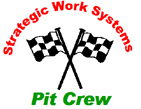Tips for helping your improvement process endure.
One of the biggest barriers to maintenance and reliability improvement initiatives is management turnover. When upper management–the decision-makers in a company–change because of promotions or reorganizations, improvement initiatives often come under close scrutiny. New leaders frequently come into the job with improvement ideas of their own and are seldom aware of the real benefits of the current programs. Wanting to make a big splash in the pond, they tend to push their own agenda at the expense of the thousands of hours, and dollars, invested before they arrived in the executive suite.
Surviving changes in management is a tough challenge for maintenance and reliability improvement initiatives because very few upper managers and key decision-makers truly understand the value that reliable equipment and processes bring to the business. They often see maintenance as a necessary evil, pure overhead, and an expense to be reduced in order to become more cost competitive.
So, how can you survive changes in management? If your maintenance and reliability improvement initiative is truly improving the bottom line, improving plant performance, show it! Show through historical trending how more reliable equipment is less expensive to operate that unreliable equipment. Consider the cost of maintenance as well as the additional revenues resulting from uninterrupted throughput and customer orders shipped on time. Data, data, data! Having historical data to show improvements in maintenance and reliability key performance indicators is key to surviving changes in management. Without the data, you are “whining,” so to speak. Make sure the data connects to the bottom-line business indicators, not just the typical maintenance and reliability measures.
Other survival-preparedness should include before and after photos of critical equipment process areas. Visually show the affects of the old practices. People often forget how bad it was or how bad it could be if an improvement initiative is stopped or if employees are discouraged by the curtailment of an improvement process that made their place a better place to work. Many of the modern maintenance and reliability improvement initiatives result in equipment that is easier to maintain and operate. Collect “testimonials” along the way from people who are working in the area where improvements are being made or have been made. Undoing an improvement process that has engaged the people on the plant floor can do irreparable damage to the attitudes, cooperation, and that little extra discretionary effort that people contribute because they know they are making a difference.
One of our clients has been on a “TPM journey” since 1994 in their large union plant. They have grown to appreciate the value of documenting performance improvements using many of these approaches. They compile a list of TPM improvement activities quarterly, link the activity to the appropriate pillar of TPM, quantify the benefits to the people, and summarize the bottom-line benefits in terms of one-time and annual cost savings, cost avoidance, improved revenue/throughput. Digital photos of before and after conditions often accompany their reports and presentations to upper managers and senior corporate leaders. The key-performance data that has been collected for years, but seldom used, is now displayed on large colorful charts in prominent places. While this practice is not yet plant-wide, it is beginning to be used as an excellent communications tool in many of the areas where improvement efforts are under way.
Don’t underestimate the power of the camcorder in showing before and after scenes. Several of our clients have used this technique to show situations that the decision-makers would probably not ever get close enough to appreciate in real life. The value of the video is “in-your-face” undeniable close-ups complete with sound of before and after equipment and process improvements.
I get calls and e-mails from readers who are experiencing the “death” of maintenance and reliability improvement processes because of changes in the company’s leadership. They wonder what they can do to save a program that they believe in and have been championing for years. Following the advice in this article can save some of these programs. Others cannot be saved. Unfortunately, some improvement programs have had little or no measurable effect on the bottom line. They were not focused on results. They were merely a program to implement in the hopes that sizeable results would follow.
The bottom line is this: Be able to demonstrate how maintenance and reliability improvements have beefed up performance of the business in terms of costs and throughput (revenues) and have positively affected the people and the work environment. The language of “maintenance” alone often goes unheard by people in business leadership roles.
© 1999
Robert M. Williamson
Strategic Work Systems, Inc.
Columbus, NC 28722
[email protected]
![]() Download a PDF of this article by clicking here Surviving Changes in Management
Download a PDF of this article by clicking here Surviving Changes in Management
